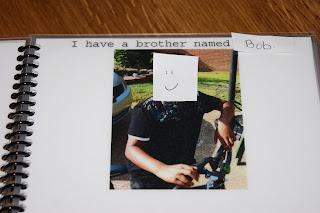Click HERE to sign the petition!
Are you familiar with plagiocephaly and torticollis? The number of infants diagnosed with flat spots on the head (plagiocephaly) and tight neck muscles (torticollis) have been on the rise in America. Recent studies cite incidence rates of plagiocephaly as high as 48%, and one study cites a six-fold increase in rates of incidence, increasing from 1 in 300 infants to 1 in 60.
These conditions are serious, and we need to bring attention to them with a
PLAGIOCEPHALY & TORTICOLLIS AWARENESS DAY in order for parents to recognize the signs early and get their children the help that they need early on.
Here is a testimonial from a mom who has dealt with these conditions first hand:
Both of our sons developed plagiocephaly after birth. With our first, I noticed that he tended to always look to one side right from birth, but even though I'm a physical therapist myself, it never occurred to me that he might have torticollis (tight muscles in the neck) or develop a flat spot– I was so worried about breast feeding, lack of sleep, and everything else that comes along with a newborn that I just wasn't looking at my baby through PT eyes!
When my son was about 10 weeks old, we finally noticed his tendency to look to one side and the flat spot that was developing, so we went to the pediatrician, who told us not to worry about it, and repeatedly telling us "it will round out on its own". I think my husband and I were in denial a little, not wanting to even consider that it might not resolve on its own. So we waited and waited, and didn't pursue further intervention until he was almost 1 year old.
At that time, we went to a local Occupational Therapist who specializes in babies with torticollis. She is a very skilled therapist, as well as a very warm and empathetic person– she is a wonderful clinician. She began educating us on stretching and positioning, and strongly recommended cranial banding due to the assymetry in his face, ears, and jaw. Our son began wearing the helmet shortly after his first birthday (which is very late in terms of effectiveness for cranial banding!), and wore it 23 hrs/day for 3 months. I was SO anxious about the helmet, and remember crying about my poor baby having to wear it… but we had it painted to look like a footbal helmet, and he actually looked really cute in it and it didn't bother him one bit. Most importantly, it worked!
He is now 5 years old and has a perfectly round head with no assymetry. Also, the OT and our pediatrician (who later got on board with treatment) wrote excellent letters to our insurance company, and our cranial band was paid for IN FULL– we were amazed and ecstatic!
Our second son was born about a year after our first came out of his cranial band, and he also had a strong tendency to look towards one side right from birth. The second time around I was definitely watching him through my physical therapist eyes! We noticed the torticollis immediately and brought him to our OT within about 2 months. We started doing weekly OT sessions and home exercises, as well as using our knowledge about appropriate positioning and use of tummy time, and after a couple months his flat spot had disappeared and he was no longer turning his head in only one direction.
I feel strongly that if we had not intervened as early as we did with our second son, we would have ended up needing a cranial band for him too, so I'm so happy that we knew better the second time around. I hope this information might be helpful to anyone who is in a similar situation, unsure of whether or not to pursue further intervention. If you notice a flat spot or limited range of motion in the neck at all, I would definitely recommend purusing intervention… cranial banding is non-invasive and very effective, but can be expensive (depending on your insurance) and time-consuming, so all the more reason to pursue early intervention to possibly eliminate the need for a band at all!
How can you can help?







































